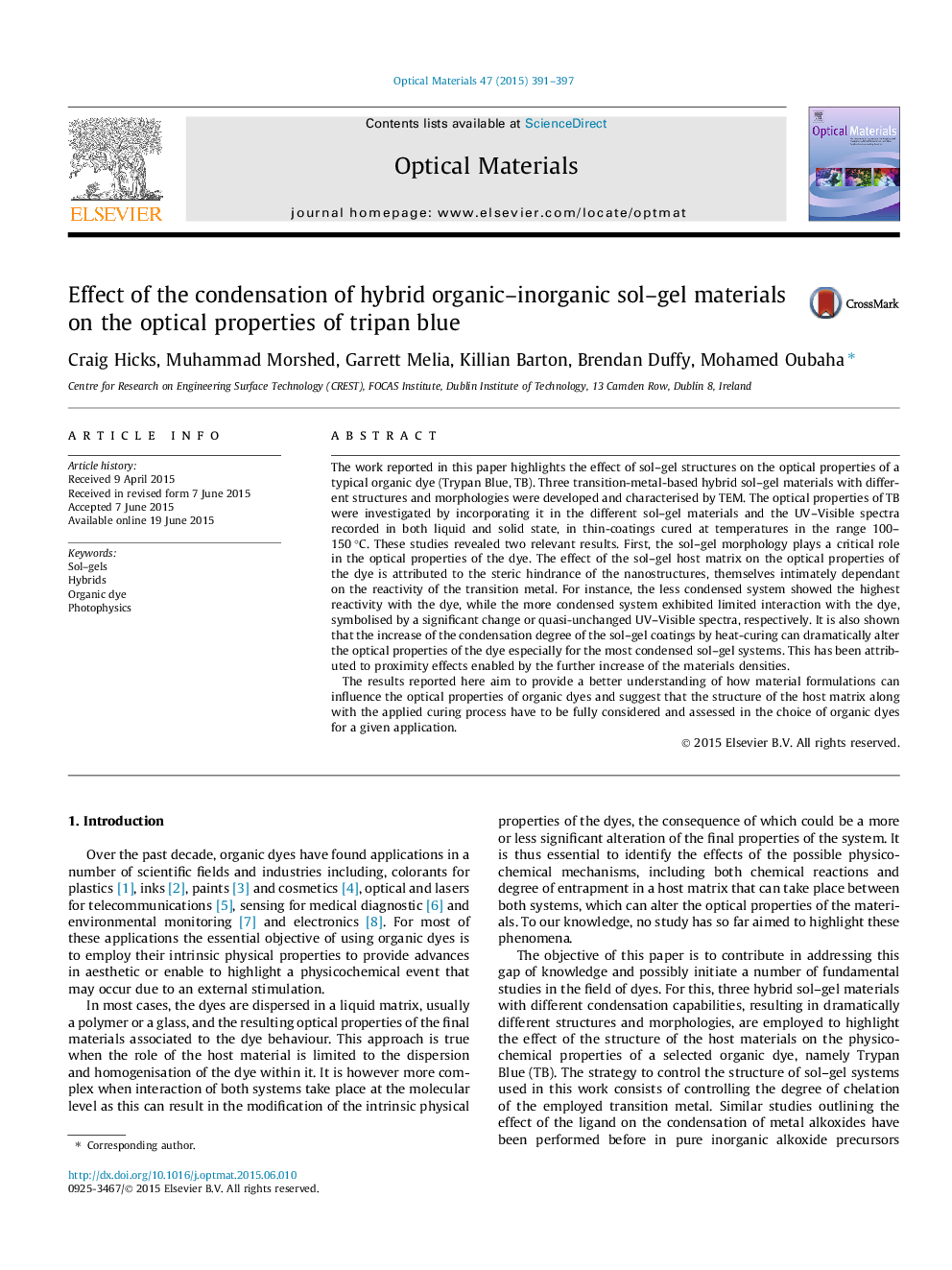| کد مقاله | کد نشریه | سال انتشار | مقاله انگلیسی | نسخه تمام متن |
|---|---|---|---|---|
| 1493731 | 1510787 | 2015 | 7 صفحه PDF | دانلود رایگان |
• Development of dye-doped transition metal – based hybrid silicate sol–gel materials.
• Correlation of sol–gel structures and optical properties of an organic dye.
• Effects of sol–gel condensation and curing process on the interactions with the physico-chemical properties of organic dyes.
• Sol–gels with minimum condensation degrees favour interaction with organic dyes and changes in optical absorption.
The work reported in this paper highlights the effect of sol–gel structures on the optical properties of a typical organic dye (Trypan Blue, TB). Three transition-metal-based hybrid sol–gel materials with different structures and morphologies were developed and characterised by TEM. The optical properties of TB were investigated by incorporating it in the different sol–gel materials and the UV–Visible spectra recorded in both liquid and solid state, in thin-coatings cured at temperatures in the range 100–150 °C. These studies revealed two relevant results. First, the sol–gel morphology plays a critical role in the optical properties of the dye. The effect of the sol–gel host matrix on the optical properties of the dye is attributed to the steric hindrance of the nanostructures, themselves intimately dependant on the reactivity of the transition metal. For instance, the less condensed system showed the highest reactivity with the dye, while the more condensed system exhibited limited interaction with the dye, symbolised by a significant change or quasi-unchanged UV–Visible spectra, respectively. It is also shown that the increase of the condensation degree of the sol–gel coatings by heat-curing can dramatically alter the optical properties of the dye especially for the most condensed sol–gel systems. This has been attributed to proximity effects enabled by the further increase of the materials densities.The results reported here aim to provide a better understanding of how material formulations can influence the optical properties of organic dyes and suggest that the structure of the host matrix along with the applied curing process have to be fully considered and assessed in the choice of organic dyes for a given application.
Journal: Optical Materials - Volume 47, September 2015, Pages 391–397
